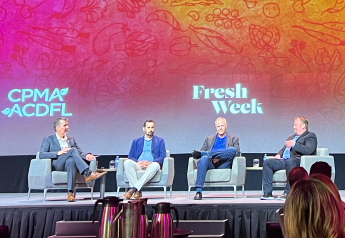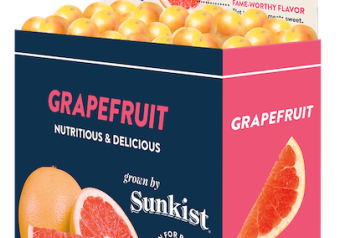Produce safety: What we know about animal intrusion, proximity

Animal intrusion into produce fields has been an obvious food safety risk for some time. More recently, the risks associated with proximity to animal agriculture and habitats — including evidence for commodities other than leafy greens — have received high-profile interest, demanding increased attention from the fresh produce industry.
As a longtime member of Center for Produce Safety’s technical committee, I know we can look to CPS’ produce-specific food safety research to guide us. And as a longtime executive working in this space, I believe there is a need for the industry to share our commitment to food safety and the progress we have made by highlighting the good works of CPS and the collaborating research scientists whom we have supported.
Early focus on animal intrusion
CPS research validates the food safety threat posed by animals intruding on fresh produce spaces and offers related risk reduction advice to the industry. For example:
- In 2019, a rapid response research project by the University of Arizona’s Channah Rock found that simulated animal intrusion in Yuma Valley fields resulted in pervasive contamination.
- University of California at Davis’ Michelle Jay-Russell found in 2010 that wild dogs and coyotes may carry pathogens into produce fields. An army of volunteers collected almost 500 scat samples from fields and animal shelters; CPS board chair Vic Smith opened doors with local officials.
- Jay-Russell’s 2011 project found that amphibians and reptiles shed Salmonella, and might contaminate water sources, in two diverse growing regions: California’s Central Coast and southeastern Georgia.
- In 2014, Jay-Russell found that, while common desert small mammals and birds may carry Salmonella and non-O157 shiga toxin-producing E. coli, they are not significant sources of E. coli O157:H7 compared to high-density cattle operations.
Proximity matters, too
More recently, high-profile attention has increased on potential risks posed by the proximity of produce fields to domesticated animal agriculture. For example, investigating a 2020 E. coli O157:H7 outbreak linked to leafy greens, the Food and Drug Administration found the outbreak strain in cattle feces collected about a mile uphill from a produce field. That same year, the agency’s report on a Salmonella Newport outbreak linked to whole red onions noted that sheep grazed, and signs of animal intrusion were found, near implicated onion fields.
Citing proximity to cattle operations, “we recommend that all growers be aware of and consider adjacent land use practices, especially as it relates to the presence of livestock and the interface between farmland, rangeland, irrigation water and other agricultural areas,” FDA Deputy Commissioner Frank Yiannis said in April 2021.
CPS continues its research to help answer the industry’s questions about animal proximity. The industry is encouraged to provide research ideas on this topic directly to CPS.
At CPS’s Research Symposium in June, University of Arizona’s Kelly Bright will update attendees on her ongoing work to quantify the risk to fresh produce posed by dust-borne pathogens under varied conditions, including humidity. (Bright’s team constructed special strains of O157:H7 and Salmonella Newport for this project.) University of Georgia’s Nikki Shariat will update attendees on her ongoing project to assess risks posed to fresh produce farms by wild birds.
What’s next?
The science on this subject is telling us that proximity to animal agriculture and habitat must figure more prominently in our food safety programs, regardless of commodity or region. We must revisit our hazard analyses and risk assessments and think critically and rationally about our current practices and risk mitigation strategies. Continuous improvement must be our goal.
Plugging into CPS is the best way I know to stay current with fresh produce-specific food safety science and news. I am continually impressed by the level of expertise shown by CPS researchers, volunteers and staff. Start by visiting the CPS website, https://www.centerforproducesafety.org.
And while there are many levels of competition in the fresh produce business, food safety should not be one of them; we should be willing to share ideas and develop solutions together. CPS provides that forum.
Why produce-specific research is important
The public health community’s ability to detect foodborne illness outbreaks, and to connect the dots to sources including fresh produce, is continuously improving. Similarly, our industry should want the public and other stakeholders to know about our tremendous effort to close our food safety knowledge gaps and to develop solutions to better protect the consumer. CPS has been deftly guiding close cooperation among industry, academia, and public health and regulatory agencies since 2007, with real results. CPS has already funded 211 research projects valued at $36 million.
Within the context of billions of servings consumed per year, the incidence of illness associated with fresh produce is exceedingly rare. We can’t let consumers lose sight of the fact that fresh fruits and vegetables are an essential part of a healthy diet — and that they can count on us to continuously improve the wholesomeness and quality of our products. We owe that not only to consumers, but also to our own families, our employees and our industry as a whole.







